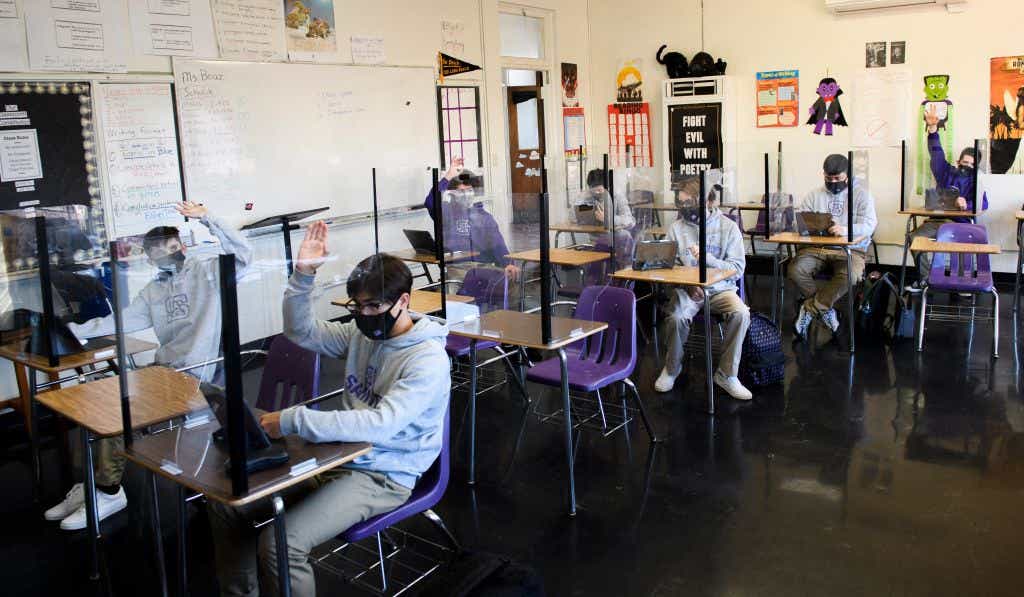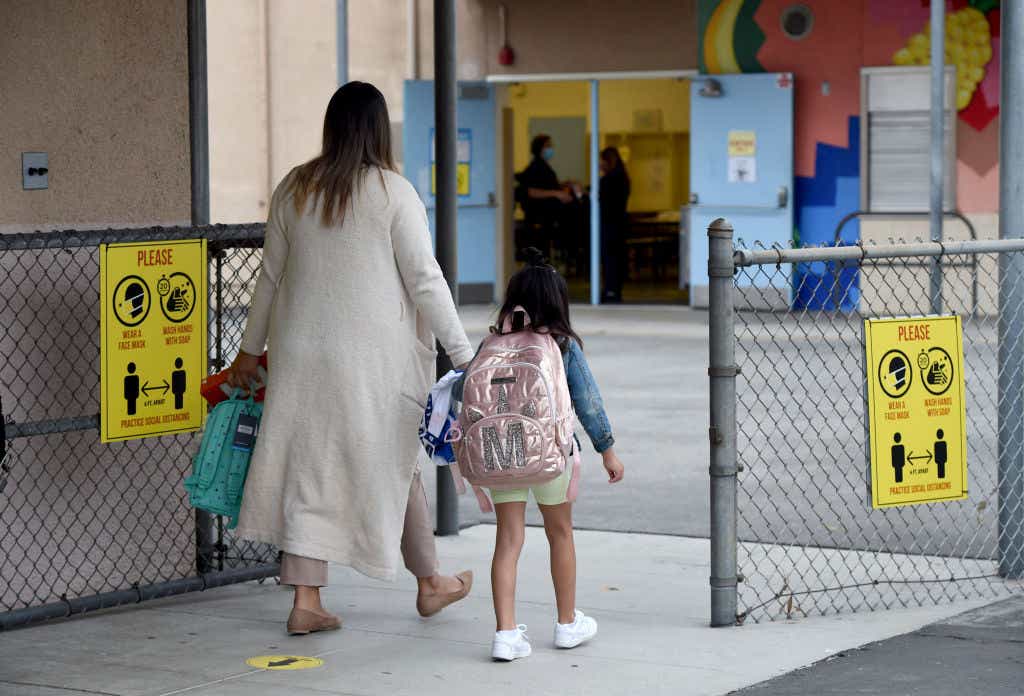You don't need to be a parent of a young child to know that this school year has been a rocky one. With erratic schedules, including switches back and forth from remote to in-person instruction, it's tough for families to find stability. That's just the beginning of the problem, though: Amid staffing shortages brought on Covid — especially by the highly transmissible Omicron variant — public schools are on the brink of disaster. And teachers are getting fed up.
Amber Wilson, a high school teacher in Denver, tells us her district had to cancel classes because of the number of staff out sick due to the virus. At one point, 14 teachers were out, and while that might not sound like a lot, Wilson says that number represents about 20% of her school’s teaching staff. If the trend increases, the district will have no choice but to temporarily shutter its doors.
“I worry that we're running towards a catastrophe,” says Michael Reinholdt, an elementary school teacher in Davenport, Iowa. “We're going to end up looking over our shoulders and going, ‘What should we have done?’ And we're going to have nothing left — we're just going to be in crisis mode.”
In addition to addressing learning gaps due to the switch to remote learning, teachers are also dealing with students increasingly acting out in class, because many have just forgotten what it’s like to be in school. “There's so much pressure being put on us in terms of helping the kids readjust,” Wilson says. “A lot of the students are freshman and our sophomores and many of them haven't really had 'real' school since they were in middle school.”
Randi Weingarten, president of the American Federation of Teachers hopes that waning Omicron cases in some parts of the country will offer some reprieve from what she calls “the hardest and the most challenging year” that any educator or parent has faced in generations. “Hopefully we'll have some time to breathe and some period of time that's normal enough and less anxiety-ridden so teachers can do the magic that they do to help kids thrive,” she says.

Credit: Getty
The problem at the moment is that there simply aren't enough qualified teachers — and the pandemic is only making this situation more dire. Nationally, there were 575,000 fewer local and state education employees in October 2021 than in February 2020, according to the U.S. Bureau of Labor Statistics. Some states are struggling more than others — in Illinois alone, 88% of school districts have confirmed that they have a teacher shortage, and 77% are saying that the shortage is only getting worse.
“We're doing everything we can, but it feels a little bit like we're losing the battle,” says Mark Klaisner, who’s president of the Illinois Association of Regional Superintendents of Schools.
The subject areas hardest hit are traditionally tough-to-staff ones, such as math and special education. To address these alarming teacher shortages, lawmakers are rewriting hiring practices: Earlier this month, California Gov. Gavin Newsom signed an executive order that temporarily gives schools more flexibility in staffing decisions, like rehiring recent retirees for short stints. This month, Oklahoma Gov. Kevin Still issued an emergency order to allow state workers to volunteer as substitute teachers. The situation is becoming increasingly dire in other states too: Everyone from superintendents to parents and alumni are being called on to fill in as substitutes.
Due to the shortage, Klaisner worries that students aren't getting the kind of quality education they need, and expects that to impact academic performance. "In Illinois, we do our statewide testing in March and I'm not quite sure what to expect," he tells us. "It's only reasonable to believe that we're not gonna see tremendous educational gains, if any, but we're providing the best we can, which I will admit, I think is somewhat subpar."
Weingarten emphasizes that Newsom's and Still's orders are just “Band-Aid approaches,” and that teacher shortages have long plagued education. She says there need to be more long-term solutions for not only hiring more teachers, but finding ways to keep them in the profession. A good place to start, she argues, is by paying them a fair wage. Even though many boost a master’s degree, public school teachers earn roughly 20% less in weekly wages than their counterparts in other fields, and they're paid about $63,645 on average (which doesn't factor in rising inflation).
“We need to make the job of teaching attractive so that people who come to this job want to be teachers and equally, if not more important, want to stay teachers,” says Weingarten.

These income concerns are nothing new: There has long been public outcry over dismal teacher pay, and lawmakers are finally doing something about it. Just last year, legislators in at least 15 states, including Kentucky and Colorado, either proposed increasing teacher pay or have already done so. Still, retaining quality instructors isn't all about money: Teachers say it also comes down to issues like safety and respect — neither of which have been easy to address amid political battles over school reopenings, and what should or shouldn’t be taught in schools, such as educating students about racism.
Weingarten worries that the discourse around public education has become so “toxic” that it has made the profession “unsustainable.” Her concern is well-placed: On the first day of Iowa’s legislative session, GOP Senate President Jake Chapman accused educators of having a “sinister agenda.” On top of these debates, Republicans have already identified education and the return to in-person learning as a potential issue to galvanize suburban voters ahead of midterm election in November.
“Teachers have to feel respected as professionals — you have to be able to trust them to know what they're doing, and that comes from the public in general,” Reinholdt tells us. Instead of pointing fingers, he believes this is a time when the community needs to pull together to support schools. “It’s going to take everyone working together,” he says.









